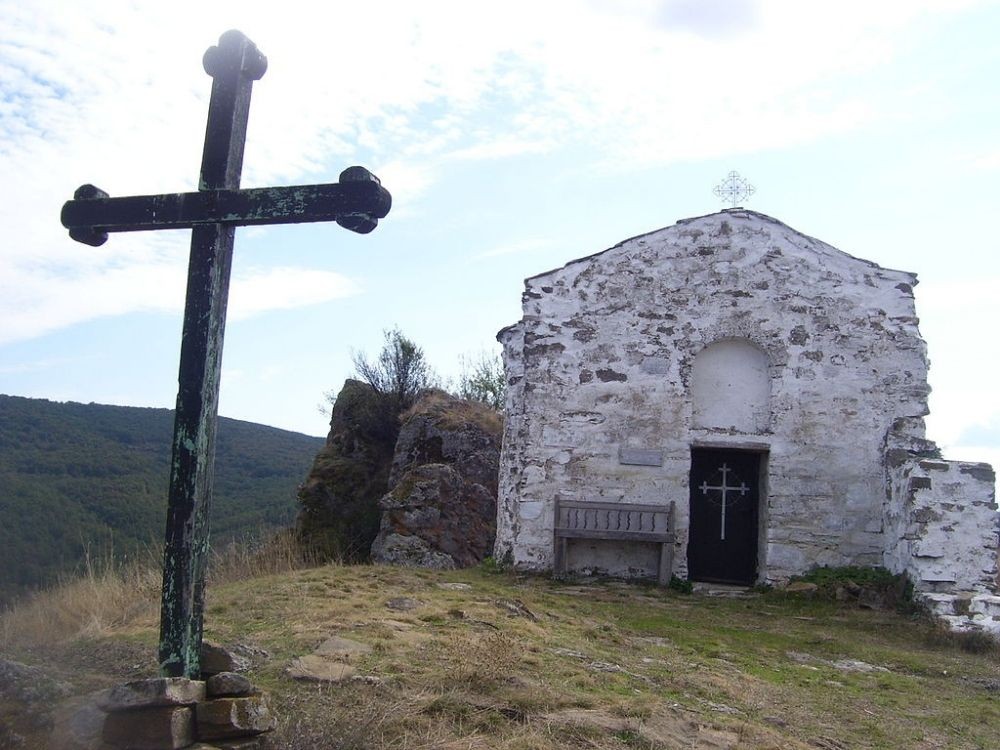A tiny chapel, sheltered on a small cliff from the surrounding waters, keeps stories from the Middle Ages to the present day: about the Bulgarian soldiers “vuinutsi” on service in the Ottoman army, about the beehives called “ulishta”, which gave the name to the Pchelintsi village (Bulgarian for “bee”), about priest Savva who led the worshippers from the parish to the Rila Monastery. And although many events, everyday occurrences and acts of nature have gone by since then, the most gruesome of all happened in the past century, when by human will a water inferno swept away an entire village.
In the 1970s, the socialist regime in Bulgaria decided to wipe off the map the village of Pchelintsi, burying it under a newly-built dam. Today, from the former settlement in the Kovachevtsi municipality the only silent witnesses to this act of barbarism remain the “St. Joan Letni” Chapel, a couple of houses and part of the cemetery.
“We were cut off from the world, there was no transport, the schools were closed down”, Parvan Lazarov recalls. “The young ran away to the cities and when the elderly were displaced, half of them died from grief.”
Due to the construction of the Pchelina dam, the people from the village scattered – most of them went to the so-called “Pchelintsi neighbourhood” in Radomir (50 km away from Sofia), while the rest settled down in the neighbouring towns and villages. To keep alive the memory of their drowned home village, its former inhabitants built a monument in the surviving schoolyard and have been gathering here every year since 1975 to meet their fellow villagers.
While the former inhabitants and their descendants hold dear the memory of this place, tourists come here mostly to pay homage to the lonesome chapel leaning over the dam. Because of its low porch, one enters this house of God with a bow, while a white bench outside invites visitors to contemplate, reflect and reminiscence.

“This is what people could afford – the churches were much smaller back then”, explains Milena Karamfilova, curator at the Regional Historical Museum in Pernik.“History researcher Stamen Mihailov dates it to the 15th-16th century, but there is a plate with the year 1,350 written on it. No one can determine with certainty the date of construction of the chapel. It is possible that it was later reconstructed. Its architecture is typical of this part of the country – a small building, partially dug into the ground. The chapel overhangs the dam and reminds us that faith will always shield us and whatever ventures we undertake, it will guide us.”
Sadly, vandals ruined most of the priceless frescos dating from the 15th and 16th centuries, scratched out the saints’ eyes and left foul words on the walls. Nevertheless, some pictures are still visible – those of St. Theodore Tyron and St. Theodore Stratilates, Saints Constantine and Helena, the Virgin in the altar apse.
Radoslav Alexandrov has set about to renovate the chapel. He first saw the temple surrounded by the waters of the dam when he was a small child.

“I often go there and I have always noticed how desecrated the frescos are”, he complains. “It pains me and I have always wondered if someone could repair and conserve them. So I got in touch with Kitan Kitanov – a wonderful conservationist and restorer from the Archaeological museum and he promised that the two of us would do the whole thing together. So now we have launched a campaign to raise money.”
The tiny porch of the “St. Joan Letni” Chapel has not been locked in a long time. It trustfully gives in to the hand that opens it and welcomes in both the worshipper and the sinner who hold a spray in their hand.
Written by: Diana Tsankova (based on a story by Elena Tamakyarska)
English version: Milena Kazakova
Photos: archive
The 85 th anniversary since Southern Dobrudzha returned within the bounds of Bulgaria will be celebrated with an official ceremony on 1 October in Silistra, the Bulgarian news agency BTA reports. Representatives of the local and central..
Bulgarian Patriarch Daniil met with Ecumenical Patriarch Bartholomew in Thessaloniki, the Bulgarian Patriarchate announced. The two discussed the centuries-old spiritual ties between the Ecumenical Patriarchate of Constantinople and the Orthodox..
On September 22, 1908, Prince Ferdinand I proclaimed Bulgaria’s independence in a manifesto, formally establishing the Third Bulgarian Kingdom. The location was chosen with care: the Church of the Forty Martyrs in the old capital, Veliko Tarnovo,..

+359 2 9336 661
